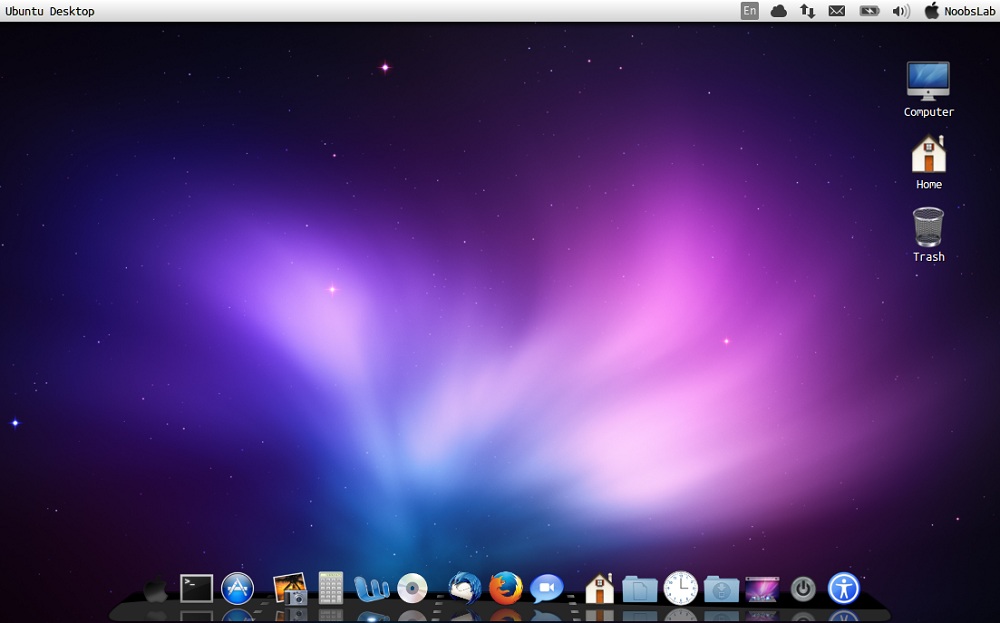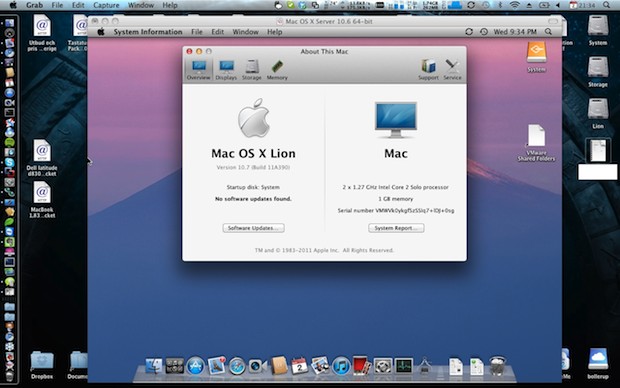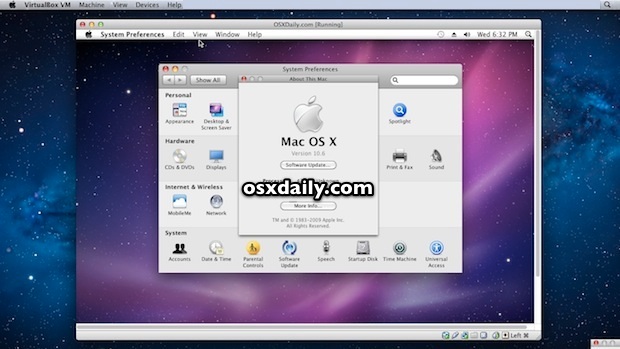- Remote Install Mac Os X For Mac Download Windows 10
- Remote Install Mac Os X For Mac Download Mac
- Mac Os X Download
Remote Install Mac OS X is a remote installer for use with MacBook Air laptops. Download Review Comments Questions & Answers (1) We do not have a download file for the latest version (2.4), but you can try downloading it from the developer's site. Download Microsoft Remote Desktop for Mac. Connect to Windows-based PCs to access Windows-based files, applications, devices, and networks from your Mac.
Estimated reading time: 6 minutes
Docker Desktop for Mac is the Community version of Docker for Mac.You can download Docker Desktop for Mac from Docker Hub. Lenovo u310 for macbook pro.
By downloading Docker Desktop, you agree to the terms of the Docker Software End User License Agreement and the Docker Data Processing Agreement.
What to know before you install
Relationship to Docker Machine: Installing Docker Desktop on Mac does not affect machines you created with Docker Machine. You have the option to copy containers and images from your local default machine (if one exists) to the Docker Desktop HyperKit VM. Whenyou are running Docker Desktop, you do not need Docker Machine nodes running locally (or anywhere else). With Docker Desktop, you have a new, nativevirtualization system running (HyperKit) which takes the place of theVirtualBox system.
System requirements
Your Mac must meet the following requirements to successfully install Docker Desktop:
Mac hardware must be a 2010 or a newer model, with Intel's hardware support for memory management unit (MMU) virtualization, including Extended Page Tables (EPT) and Unrestricted Mode. You can check to see if your machine has this support by running the following command in a terminal:
sysctl kern.hv_supportIf your Mac supports the Hypervisor framework, the command prints
kern.hv_support: 1.macOS must be version 10.14 or newer. That is, Mojave or Catalina. We recommend upgrading to the latest version of macOS.
If you experience any issues after upgrading your macOS to version 10.15, you must install the latest version of Docker Desktop to be compatible with this version of macOS.
Note: Docker supports Docker Desktop on the most recent versions of macOS. Docker Desktop currently supports macOS Mojave and macOS Catalina.
As new major versions of macOS are made generally available, Docker stops supporting the oldest version and support the newest version of macOS.
At least 4 GB of RAM.
VirtualBox prior to version 4.3.30 must not be installed as it is not compatible with Docker Desktop.
Remote Install Mac Os X For Mac Download Windows 10

What's included in the installer
The Docker Desktop installation includes Docker Engine, Docker CLI client, Docker Compose, Notary, Kubernetes, and Credential Helper.
Install and run Docker Desktop on Mac
Double-click
Docker.dmgto open the installer, then drag the Docker icon to the Applications folder.Double-click
Docker.appin the Applications folder to start Docker. (In the example below, the Applications folder is in 'grid' view mode.)The Docker menu in the top status bar indicates that Docker Desktop is running, and accessible from a terminal.
If you've just installed the app, Docker Desktop launches the onboarding tutorial. The tutorial includes a simple exercise to build an example Docker image, run it as a container, push and save the image to Docker Hub.
Click the Docker menu () to seePreferences and other options.
Select About Docker to verify that you have the latest version.
Congratulations! You are now successfully running Docker Desktop.
Double-click the downloaded file ‘jdk-8u25-macosx-x64.dmg' and follow the on-screen installation.3. Safari download for mac os.
If you would like to rerun the tutorial, go to the Docker Desktop menu and select Learn.
Uninstall Docker Desktop
To unistall Docker Desktop from your Mac:
- From the Docker menu, select Troubleshoot and then select Uninstall.
- Click Uninstall to confirm your selection.
Note: Uninstalling Docker Desktop will destroy Docker containers and images local to the machine and remove the files generated by the application.

Switch between Stable and Edge versions
Docker Desktop allows you to switch between Stable and Edge releases. However, you can only have one version of Docker Desktop installed at a time. Switching between Stable and Edge versions can destabilize your development environment, particularly in cases where you switch from a newer (Edge) channel to an older (Stable) channel.
For example, containers created with a newer Edge version of Docker Desktop maynot work after you switch back to Stable because they may have been createdusing Edge features that aren't in Stable yet. Keep this in mind asyou create and work with Edge containers, perhaps in the spirit of a playgroundspace where you are prepared to troubleshoot or start over.
Experimental features are turned on by default on Edge releases. However, when you switch from a Stable to an Edge release, you must turn on the experimental features flag to access experimental features. From the Docker Desktop menu, click Preferences > Command Line and then turn on the Enable experimental features toggle. Click Apply & Restart for the changes to take effect.
To safely switch between Edge and Stable versions, ensure you save images and export the containers you need, then uninstall the current version before installing another. For more information, see the section Save and Restore data below.
Save and restore data
You can use the following procedure to save and restore images and container data. For example, if you want to switch between Edge and Stable, or to reset your VM disk:
Use
docker save -o images.tar image1 [image2 ..]to save any images you want to keep. See save in the Docker Engine command line reference.Use
docker export -o myContainner1.tar container1to export containers you want to keep. See export in the Docker Engine command line reference.Uninstall the current version of Docker Desktop and install a different version (Stable or Edge), or reset your VM disk.
Use
docker load -i images.tarto reload previously saved images. See load in the Docker Engine.Use
docker import -i myContainer1.tarto create a filesystem image corresponding to the previously exported containers. See import in the Docker Engine.
For information on how to back up and restore data volumes, see Backup, restore, or migrate data volumes.
Where to go next
- Getting started provides an overview of Docker Desktop on Mac, basic Docker command examples, how to get help or give feedback, and links to other topics about Docker Desktop on Mac.
- Troubleshooting describes common problems, workarounds, howto run and submit diagnostics, and submit issues.
- FAQs provide answers to frequently asked questions.
- Release notes lists component updates, new features, andimprovements associated with Stable releases. For information about Edge releases, seeEdge release notes.
- Get started with Docker provides a general Docker tutorial.
Have you ever needed to remotely log into a Mac that was physically located at another location, and install OS X Mountain Lion on it?
It's easy enough to use remote access software like LogMeIn to remotely log into the Mac, download OS X from the App Store on that machine, and begin the installation process.
However, a problem happens after the OS X installation process is successfully complete, which is when OS X presents the user with a series of 'Setup Assistant' screens. These setup screens temporarily take over the entire Mac… and temporarily disable most remote access software. In fact, these setup screens temporarily disable most of the background services on that Mac, so if you were depending on that machine being up & running for something important, you would find yourself out of luck.
To workaround this problem, you would typically need someone physically on-site in front of the computer to click through all of the Setup Assistant screens for you. At that point, you would finally be able to login remotely again and finish whatever you need to do in terms of configuring that Mac.
But there is a trick to doing all of this by yourself remotely. And by 'all of this', I mean 'remotely clicking through those Setup Assistant screens so you can gain normal remote control of that Mac again'. It turns out that OS X's built-in Screen Sharing service is STILL RUNNING in the background while those Setup Assistant screens are taking over the Mac, so you can leverage that behavior to do the remote install all by yourself.
This trick depends on 2 prerequisites:
A. You need to have remote access to ANOTHER MAC on the same local area network as the machine that you are remotely installing OS X Mountain Lion on.
B. You need to prepare in advance, BEFORE starting the OS X installation process.
Thus, here are the steps to go through:
1. On the Mac where you're installing OS X Mountain Lion, go into the 'Sharing' System Preference and enable screen sharing.

What's included in the installer
The Docker Desktop installation includes Docker Engine, Docker CLI client, Docker Compose, Notary, Kubernetes, and Credential Helper.
Install and run Docker Desktop on Mac
Double-click
Docker.dmgto open the installer, then drag the Docker icon to the Applications folder.Double-click
Docker.appin the Applications folder to start Docker. (In the example below, the Applications folder is in 'grid' view mode.)The Docker menu in the top status bar indicates that Docker Desktop is running, and accessible from a terminal.
If you've just installed the app, Docker Desktop launches the onboarding tutorial. The tutorial includes a simple exercise to build an example Docker image, run it as a container, push and save the image to Docker Hub.
Click the Docker menu () to seePreferences and other options.
Select About Docker to verify that you have the latest version.
Congratulations! You are now successfully running Docker Desktop.
Double-click the downloaded file ‘jdk-8u25-macosx-x64.dmg' and follow the on-screen installation.3. Safari download for mac os.
If you would like to rerun the tutorial, go to the Docker Desktop menu and select Learn.
Uninstall Docker Desktop
To unistall Docker Desktop from your Mac:
- From the Docker menu, select Troubleshoot and then select Uninstall.
- Click Uninstall to confirm your selection.
Note: Uninstalling Docker Desktop will destroy Docker containers and images local to the machine and remove the files generated by the application.
Switch between Stable and Edge versions
Docker Desktop allows you to switch between Stable and Edge releases. However, you can only have one version of Docker Desktop installed at a time. Switching between Stable and Edge versions can destabilize your development environment, particularly in cases where you switch from a newer (Edge) channel to an older (Stable) channel.
For example, containers created with a newer Edge version of Docker Desktop maynot work after you switch back to Stable because they may have been createdusing Edge features that aren't in Stable yet. Keep this in mind asyou create and work with Edge containers, perhaps in the spirit of a playgroundspace where you are prepared to troubleshoot or start over.
Experimental features are turned on by default on Edge releases. However, when you switch from a Stable to an Edge release, you must turn on the experimental features flag to access experimental features. From the Docker Desktop menu, click Preferences > Command Line and then turn on the Enable experimental features toggle. Click Apply & Restart for the changes to take effect.
To safely switch between Edge and Stable versions, ensure you save images and export the containers you need, then uninstall the current version before installing another. For more information, see the section Save and Restore data below.
Save and restore data
You can use the following procedure to save and restore images and container data. For example, if you want to switch between Edge and Stable, or to reset your VM disk:
Use
docker save -o images.tar image1 [image2 ..]to save any images you want to keep. See save in the Docker Engine command line reference.Use
docker export -o myContainner1.tar container1to export containers you want to keep. See export in the Docker Engine command line reference.Uninstall the current version of Docker Desktop and install a different version (Stable or Edge), or reset your VM disk.
Use
docker load -i images.tarto reload previously saved images. See load in the Docker Engine.Use
docker import -i myContainer1.tarto create a filesystem image corresponding to the previously exported containers. See import in the Docker Engine.
For information on how to back up and restore data volumes, see Backup, restore, or migrate data volumes.
Where to go next
- Getting started provides an overview of Docker Desktop on Mac, basic Docker command examples, how to get help or give feedback, and links to other topics about Docker Desktop on Mac.
- Troubleshooting describes common problems, workarounds, howto run and submit diagnostics, and submit issues.
- FAQs provide answers to frequently asked questions.
- Release notes lists component updates, new features, andimprovements associated with Stable releases. For information about Edge releases, seeEdge release notes.
- Get started with Docker provides a general Docker tutorial.
Have you ever needed to remotely log into a Mac that was physically located at another location, and install OS X Mountain Lion on it?
It's easy enough to use remote access software like LogMeIn to remotely log into the Mac, download OS X from the App Store on that machine, and begin the installation process.
However, a problem happens after the OS X installation process is successfully complete, which is when OS X presents the user with a series of 'Setup Assistant' screens. These setup screens temporarily take over the entire Mac… and temporarily disable most remote access software. In fact, these setup screens temporarily disable most of the background services on that Mac, so if you were depending on that machine being up & running for something important, you would find yourself out of luck.
To workaround this problem, you would typically need someone physically on-site in front of the computer to click through all of the Setup Assistant screens for you. At that point, you would finally be able to login remotely again and finish whatever you need to do in terms of configuring that Mac.
But there is a trick to doing all of this by yourself remotely. And by 'all of this', I mean 'remotely clicking through those Setup Assistant screens so you can gain normal remote control of that Mac again'. It turns out that OS X's built-in Screen Sharing service is STILL RUNNING in the background while those Setup Assistant screens are taking over the Mac, so you can leverage that behavior to do the remote install all by yourself.
This trick depends on 2 prerequisites:
A. You need to have remote access to ANOTHER MAC on the same local area network as the machine that you are remotely installing OS X Mountain Lion on.
B. You need to prepare in advance, BEFORE starting the OS X installation process.
Thus, here are the steps to go through:
1. On the Mac where you're installing OS X Mountain Lion, go into the 'Sharing' System Preference and enable screen sharing.
2. Test that you've got screen sharing working properly by remotely logging into another Mac on the same LAN. Bring up a new Finder window. In the left margin, underneath 'Shared', choose the name of the machine where you're installing OS X Mountain Lion. (Note: If you don't see the machine listed, then you'll need to go into your Finder Preferences, click on the Sidebar icon, and check 'Bonjour computers'.) In the upper right corner of the Finder window, choose 'Share Screen'. Type in the authorized username & password for the first machine, and voila! You are now controlling that other machine's screen!
3. Now that you know that you've got screen sharing working properly, you can go ahead and remotely install OS X Mountain Lion on the first machine. Note that you won't be able to visually monitor the entire installation process remotely, because the OS X installer needs to restart that machine and it does most of its installation while ZERO SERVICES are running. So after the OS X Installer restarts the first machine, you should BE PATIENT and wait about 45 minutes before attempting to log into that machine via screen sharing.
4. After about 45 minutes have passed, remotely log into the 2nd machine on the LAN via LogMeIn, and use OS X's screen sharing to remotely control the first machine. You will find those lovely Setup Assistant screens which have taken over that first Mac, and you can very easily click through those screens until you are taken to your familiar Mac desktop again.
5. That's it! Once you can see the Mac desktop on the first machine, you can go back to using LogMeIn (or whatever remote access software you're using) to remotely control that Mac.
Remote Install Mac Os X For Mac Download Mac
I hope you find this trick helpful!
I hope you enjoyed this article. If so, please donate a small amount via Paypal so that I can continue to post blog articles in the future.
You can also donate via Bitcoin to my Bitcoin Address of: 1McG4jrzZ7UPPPneWVjv9141vnDRH7ksza
Mac Os X Download
Who is ScottWorld? ScottWorld provides the best FileMaker consultants in Austin & Los Angeles.
